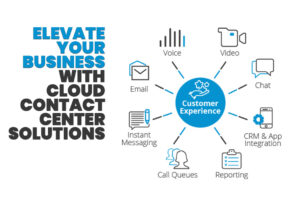In the digital age, where businesses operate with a myriad of technological tools, the challenge of managing these devices efficiently has never been more pressing. From smartphones and tablets to laptops and IoT devices, the diversity and volume of devices in the corporate environment are on a steep rise. This surge in device usage brings about increased complexity in management, security vulnerabilities, and compliance challenges, highlighting the acute need for effective device management software. Recognizing the signs that your business requires such a solution is crucial for maintaining operational efficiency, securing data, and ensuring regulatory compliance. Here are the telltale signs that your business needs device management software now.
Increased Device Complexity and Volume
The digital transformation journey of any business inevitably leads to an increase in the number and types of devices within the organization. This growth, while beneficial for operational flexibility and productivity, introduces significant management complexities. The challenges extend beyond mere inventory numbers; they encompass device types, operating systems, and the need for seamless integration across the business ecosystem. Here’s a closer look at the issues at play:
Diverse Operating Systems
In the modern workplace, it’s common to find a mix of operating systems, such as iOS for mobile devices, Android for tablets, and Windows or macOS for desktops and laptops. Each system comes with its own set of management tools, security protocols, and update cycles. Managing these disparate systems manually not only requires significant administrative effort but also specialized knowledge of each platform. A unified device management solution simplifies this complexity by providing a single pane of glass for administrators to manage all devices, regardless of their operating system. This consolidation enhances operational efficiency, reduces the likelihood of security gaps, and ensures a smoother user experience for employees across the board.
Device Type Variety
Today’s businesses use a wide range of device types, from smartphones and tablets to laptops, desktops, and IoT devices. Each device type serves unique operational roles and thus has specific management, security, and maintenance needs. For instance, IoT devices, which are increasingly prevalent in various industries, present unique challenges in terms of security and integration into existing IT infrastructures. Device management software allows businesses to cater to the specific needs of each device type, ensuring optimal performance and security across the board.
Scalability Issues
As businesses grow, so does their device inventory. This growth is not linear; it often spikes due to new projects, seasonal workforce fluctuations, or business expansion. Manual management methods are not only inefficient but also incapable of scaling at the pace required by modern businesses. Device management software, with its automation and centralization capabilities, allows for effortless scaling. Administrators can quickly add new devices to the network, apply security policies, and distribute software updates without the need for individual device handling. This scalability ensures that businesses can grow their device ecosystem without corresponding increases in management resources or potential security vulnerabilities.
Integration Challenges
In addition to managing the devices themselves, businesses must ensure these devices work seamlessly with their existing digital infrastructure, including applications, networks, and cloud services. This integration is crucial for maintaining productivity and operational efficiency. Mobile device management implementation plays a key role here, as device management software often includes features that facilitate this integration, ensuring devices are not only well managed but also fully optimized within the business’s digital ecosystem.
Security Concerns
In an era dominated by cybersecurity threats, the security of business devices cannot be overlooked. The proliferation of devices, each serving as a potential entry point for cyberattacks, amplifies the need for comprehensive security strategies. Device management software is at the forefront of addressing these security concerns through several key features:
Enforcing Security Policies
A cornerstone of cybersecurity is the implementation of robust security policies across all devices. Device management software enables businesses to enforce security measures such as strong password requirements, two-factor authentication, encryption, and secure Wi-Fi settings. By automating the deployment of these policies, businesses can ensure uniformity in their security stance across all devices, significantly reducing the risk of data breaches. This uniform enforcement helps in mitigating the risk associated with human error, one of the most common causes of security breaches.
Remote Wipe Capabilities
The loss or theft of a device can pose a significant threat to an organization’s data security. Device management software addresses this risk through remote wipe capabilities, allowing IT administrators to delete sensitive data from devices that are lost or stolen. This feature is crucial in preventing unauthorized access to corporate data, protecting the business from potential data breaches and compliance violations.
Regular Updates and Patch Management
Keeping software and operating systems up to date is critical in protecting devices against known vulnerabilities. However, manually ensuring that every device is updated is a daunting task, especially for businesses with a large number of devices. Device management software simplifies this process through automated update and patch management features. It ensures that all devices are running the latest versions of software and operating systems, closing security gaps and protecting against malware and other cyber threats.
Device Monitoring and Alerting
Continuous monitoring of devices is essential for identifying and responding to security incidents in real time. Device management software provides monitoring capabilities that track device activity and alert administrators to suspicious behavior. This proactive approach allows businesses to quickly identify potential security threats and take corrective action before they escalate into full-blown security incidents.
Secure Access to Corporate Resources
With the increasing adoption of remote work, ensuring secure access to corporate resources from any device is more important than ever. Device management software facilitates the secure connection of devices to corporate networks and applications through features like VPN management and secure containerization. This ensures that employees can access the resources they need while maintaining the security of sensitive corporate data.
Compliance and Regulatory Requirements
Different industries face various regulatory requirements concerning data protection and privacy. Non-compliance can result in hefty fines and damage to your business’s reputation. Device management software helps in:
– Maintaining Compliance: It ensures that all your devices are configured in accordance with industry-specific regulations. This centralized control over device compliance significantly reduces the risk of non-compliance penalties.
– Audit and Reporting Tools: Device management software comes equipped with tools that simplify the reporting and auditing process. These features are invaluable during regulatory assessments, making it easier for your business to demonstrate compliance with relevant laws and regulations.
Remote Workforce Management
The rise of remote work has introduced new challenges in managing a dispersed workforce. Device management software addresses these challenges by:
– Enhancing Remote Support: Providing remote support and troubleshooting to employees, irrespective of their location, reduces downtime and boosts productivity. This ensures that remote workers remain as efficient as their in-office counterparts.
– Device Tracking and Monitoring: With features that allow for the tracking and monitoring of devices, businesses can ensure that remote work policies are adhered to, further securing data and optimizing device usage.
Conclusion
The signs indicating the need for device management software in your business are clear and pressing. From managing the increased complexity and volume of devices, addressing security vulnerabilities, ensuring compliance with regulatory requirements, to overcoming the challenges of managing a remote workforce—device management software stands as a pivotal solution. By investing in such a solution, your business is not just addressing these challenges; it’s positioning itself to leverage technological advancements for enhanced operational efficiency, improved security, and compliance posture. As you consider these signs, let them guide you towards making an informed decision that aligns with your business’s strategic goals and technological needs.




